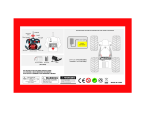
III
,
MI
,usnn
'""1
,fJfJ
CALL
CHANNEL
r
L
,usnn
,...,
,fJU
8
6-3 Programming
MEMORY MODE
I I Pressthe
~keyto
displaythe
"M"
icon
abovethe frequency
segment
of
the LCD.
Pressing the same
key again will bring
back
the VFO mode
(the
"M"
icon disappears).
MEMORY SCROLL
Enter the MEMORY MODE, rotate the
Main Tuning Dial.
MEMORY WRITE
1.
Enter
the
MEMORY MODE.
2.
Rotate the Main Tuning Dial to select
the
desired
memory
channel
to
program.
3.
Enter
the
VFO MODE. Set the fre-
quency, tone and shift accordingly.
4.
Press and hold the IIkey, then press
the
~
key to store the information
into
the
memory channel. (Stored
information: Frequency, Offset, Shift
direction, CTCSS setting, CTCSS
frequency, Power H/L, DSQ setting,
DSQcode, Skip, BatterySavesetting.)
5.
Ahigh tone beep will sound indicating
that
the
programming is completed
successfully.
6.
Memorized items in achannel may
betemporarilychanged whileyou stay
on that channel, but the written infor-
mation remains as originally program-
med.
The
original items will be called
if
you change the memory elsewhere
(ortoVFO)thencome backtothemem-
ory channel, unless re-programmed
with IIand
~
keys.
MEMORY ERASE
1. Enter the MEMORY MODE.
2. Rotate the Main Tuning Dial to select
the memory channel to erase.
3. Press and hold theIIkey, then press
the
~
key to erase the program in-
formation on the memory channel.
4. Ahigh tone beep will sound and the
flashing
"M"
icon will appear on the
LCD indicating that the memory con-
tent has been erased.
MEMORY SKIP
1. Enter the MEMORY MODE. Rotate
the Main Tuning Dial to the channel
you desire to skip during scanning
operation.
2. Press and hold theIIkey, then press
the
@5\ey.
3.
The
'i;equency
decimal point will
disappear indicating that the mem-
ory
channel will be skipped when
scanning.
4.
To
cancel the MEMORY SKIP, repeat
these steps.
MEMORY CHANNEL DISPLAY MODE
Instead
of
displaying afrequency, in
memory
mode,
the
corresponding
memory channel number only may be
displayed. In this mode you cannot
entreVFO and you cannot program
or
re-
program amemory channel unless you
first exit the Memory Channel Display
Mode. To entre this mode, first program
FL
or
KL (see Section 8-4 Other Func-
tions), and input through keypad #
631
.
The
display turns
to
Channel Number.
(At least one channel has to be already
programmed when you
do
this, orelse
..
ch-Er"will appear.) Then cancel
the FL
or
KL. Where
"skip"
channels
havebeen set,
the
hyphen
between'
"c
h"
andthe channel
number
isnotdisplayed.
Repeat the same steps to exit this mode
and get back the frequency display.
Press the @5 key.
The"
C"
icon will ap-
pearon the top right
of
the LCD. Press
~
tocomeback
to
the previous channel.
CALL
CHANNEL WRITE
1.
Enter the MEMORY MODE.
2.
Rotate the Main Tuning Dial to select
the call channel.
3.
Enter the VFO MODE. Set the fre-
quency, tone and shift accordingly.
4.
Press and hold theIIkey, then press
the
~
key
to
store the information
into the call channel.
5. Ahigh tone beep will sound indicating
that the programming is completed
successfully.
Note:
SCAN,
C€5,
<E:)
keys, and the
Main Tuning Dial are not operata-
ble in the CALLCHANNEL mode.
6-4
Scanning
Transceiver has thetimer scan function.
In this operation, scan stops at abusy
channel and resumes after 5seconds.
VFO(BAND)
SCAN
Enter
the
VFO MODE. Press the
@3"
key,
and
the frequency decimal point will
start blinking to indicate the scanning
mode.
MEMORY SCAN
Enter the MEMORY MODE, and press
the
@3R
key.(Will not start scanning
if
the call channel is indicated.)
SCAN DIRECTION
In the SCAN MODE, rotate the Main
Tuning Dial counter-elockwise to scan
downwardandclockwisetoscan upward.
STOP
SCAN
Press
the
@3"
key again,
or
press the
PTT
key.
Note:
For
those memories programmed
with SKIP (see following section),
they
will bepassed without receiv-
ing
while scanning.
SCAN
SKIP
Press
and
hold the IIkey and press the
@5'
key. Decimal point disappears from
th~
frequency display, and the channel
will be skipped when scanning.
9




















